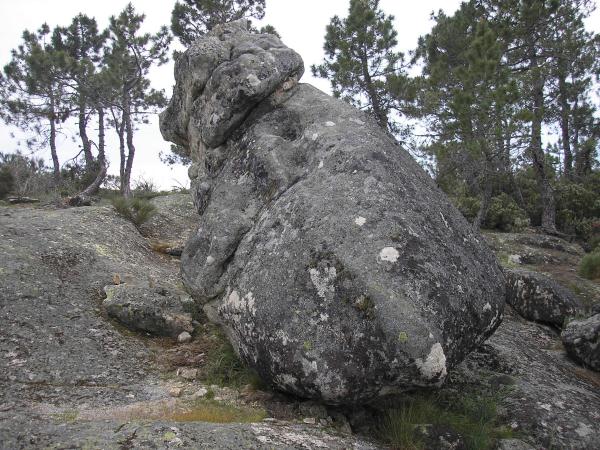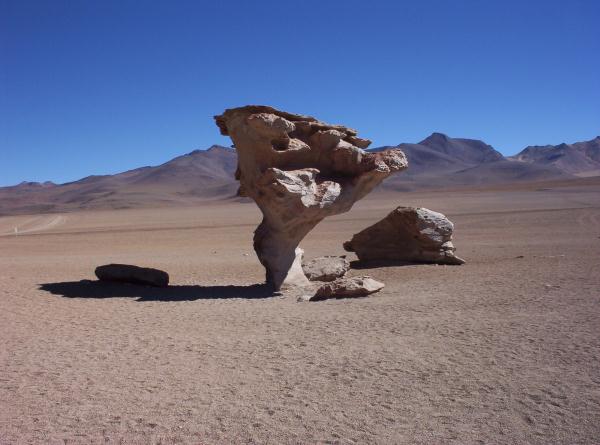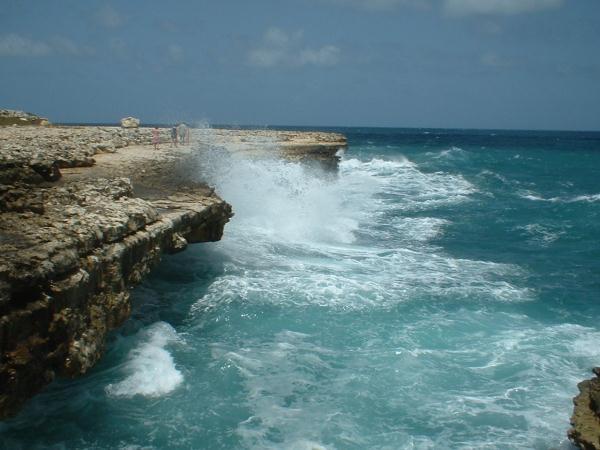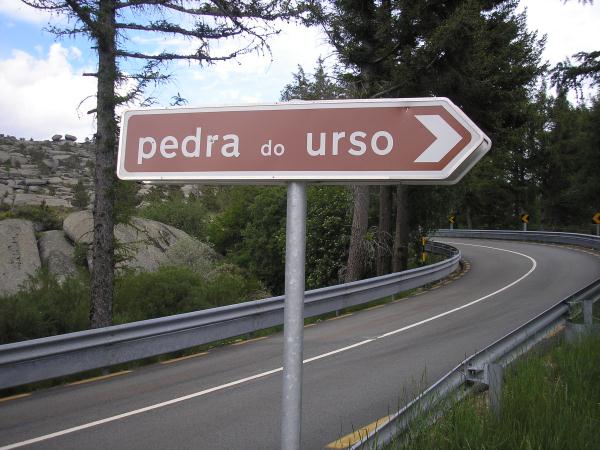|
[EN]
Erosion
Geologic material as rocks,
soils and cliffs are permanently exposed to Erosion process.
Erosion is the process of weathering and transport of smaller
solids (dust, sediments, sand,etc.) in the environment. The three
main erosional agents are wind, water and ice, and in some cases
even the force of gravity can help.
Big
granite rocks in high mountains are no exception to the rule, and
they can suffer a strong erosion process. The strong winds and
intense precipitation break up the huge mass stones into small
dimensions gravel, slowly, along the years. Water can also stay
inside the cracks on the rocks and with temperature decreasing, it
forms ice, which expands and erodes the rocky material.
Then, the eroded rocks can have
shapes that look like some known elements as people faces or
animals.
Bear's Stone
In
Serra da Estrela, at a few miles from Covilhã city, there is a
funny stone called Bear's stone. It looks like a seated bear
(obviously), observed by its back, and it results from erosion
process, being exposed to snow on rigorous winters and high
temperatures on summer.

The Earthcache
Go
to the coordinates and estimate the height of the bear (in meters).
Send me the answer by e-mail before logging the cache and when you
have permission to log the cache add a photo of yourself and the
bear to the log. If you put no picture, the log will certain be
deleted.

[PT]
Erosão
O
material geológico como as rochas, o solo e as encostas está
permanentemente exposto ao processo da Erosão. A Erosão é o
processo de desgaste e transporte de sólidos mais pequenos (poeira,
sedimentos, areia, etc.) no ambiente. Os três principais agentes
que causam a erosão são o vento, a água e o gelo, e em alguns casos
mesmo a força da gravidade pode ajudar.
As
grandes rochas de granito nas altas montanhas não são excepção à
regra, e estas podem sofrer um processo de erosão acentuado. Os
ventos fortes e a chuva intensa partem as grandes rochas em
cascalho de pequenas dimensões, lentamente, ao longo dos anos. A
água pode também permanecer em fendas nas rochas e com a diminuição
da temperatura forma gelo, o qual expande e desgasta o material
rochoso.
Assim, as rochas erodidas podem
ter formas que se assemelham a elementos conhecidos como caras de
pessoas ou animais.
Pedra do Urso
Na
Serra da Estrela, a poucos quilómetros da cidade da Covilhã, existe
uma rocha engraçada chamada Pedra do Urso. Faz lembrar um urso
sentado (obviamente), observado pelas costas, e esta pedra resulta
do processo de erosão, estando exposta à neve nos invernos
rigorosos e a altas temperaturas no verão.
A Earthcache
Vão
até às coordenadas e estimem a altura do urso (em metros).
Enviem-me uma resposta via e-mail antes de fazerem o log da cache e
quando tiverem a permissão para logar, adicionem uma foto vossa com
o urso ao log. Se não colocarem foto, o log será com certeza
apagado.
 
|